GEN III HEMI® RESTO-MOD FASTBACK BARRACUDA
– Originally built as a tribute to Boyd Coddington and fitted with an SRT8 6.1-liter GEN III HEMI® engine
– Featured as a documentary on Velocity’s Street Customs TV Show
– A lunch with actor Harrison Ford went to the buyer of this 2nd Gen Barracuda as part of a charity promotion
California has long been known as “the” place where shops that specialize in custom car building takes place, going all the way back to pioneers such as Gene Winfield, George Barris, Dean Jeffries and more, then on to more modern times with the likes of the late Boyd Coddington, Chip Foose, Troy Ladd and of course more, including talented newcomers that seem to be bursting on to the scene. Also a part of the scene, and since 1993 in fact, is the car-customizing star Ryan Friedlinghaus and his California-based West Coast Customs shop. The pictured 1967 Plymouth Barracuda is linked to Ryan’s shop, a builder Duane Mayer and all done in the spirit of Boyd Coddington. It all went down from the love of the second-generation Barracuda fastback.
It’s a true “what if” story that goes back some years ago and revolves around a Barracuda project that Boyd Coddington had thought about but it never happened, and after his death in 2008, obviously it wasn’t ever to happen. However, it’s a strange twist of fate that one of his top shop guys, Duane Mayer, went to work for Ryan’s WCC shop and one day the topic arose about the Mopar® vehicle that never happened. Mayer remembered seeing a rendering of what Boyd had in mind for the vintage A-body, and by chance at one of the Pomona Swap Meets in California, a nice, clean and rust-free 1967 Barracuda fastback was spotted.
“The rendering stuck in my mind and when I was at the Pomona Swap Meet and saw a super-straight, rust-free ’67 Barracuda, I thought of Boyd Coddington and that drawing.” Mayer wasn’t necessarily a “Mopar Guy” but the sketch of a customized Fastback ‘Cuda changed everything for him; he really thought it would make a very cool street cruiser.
The donor car was purchased for the sum of $7,000 and it was parked inside a garage for safe keeping, ready to be modified when the time came. Good friend Marc Holmes (owner of Custom Rod Gauges in Fresno, CA) volunteered to get involved as a financial backer, ready to provide the bankroll when needed.
West Coast Customs is contracted with the TV show Street Customs and after hearing about this vintage Barracuda, the decision was made to feature the classic Mopar vehicle and do a proper tribute to Boyd, to build the car in much the fashion as what Duane Mayer felt it would have been constructed if directed by Coddington himself.
The car was brought to WCC and after Ryan saw it, he was impressed the 40-plus-year-old machine was in such great condition, and agreed with Mayer to do it up as a tribute car to the man but to add some West Coast Custom touches. Duane and Ryan both have strong personalities and for the most part the project went as planned; however, in some cases, there turned out to be some friction and personality clashes along the way.
After the car was stripped of the original engine and running gear (a 225-cid Slant Six and automatic transmission, plus light-duty 7.25-inch rear axle), it was the time to come up with a suitable new powerplant for the project.
BRING ON THE GEN III HEMI CRATE ENGINE

The chosen engine was the (#P5155067) 425-hp 6.1L HEMI SRT8 and it is equipped with 10.3:1 compression pistons and displaces 370 cubic inches.

The 6.1L HEMI crate engine was a great fit in the A-body engine compartment, and the intake system cleared the stock hood without modification. This view shows the Forward Struts from Magnumforce that is designed to add strength to the front end.

Jumbo-sized S & B filter was used mounted on a short 90-degree turn-pipe, a close fit; however, it provides ample breathing for the HEMI powerplant.

A small aluminum overflow canister was added and mounted in the area the original battery was once located (now fitted to the rear of the vehicle).
INTERIOR
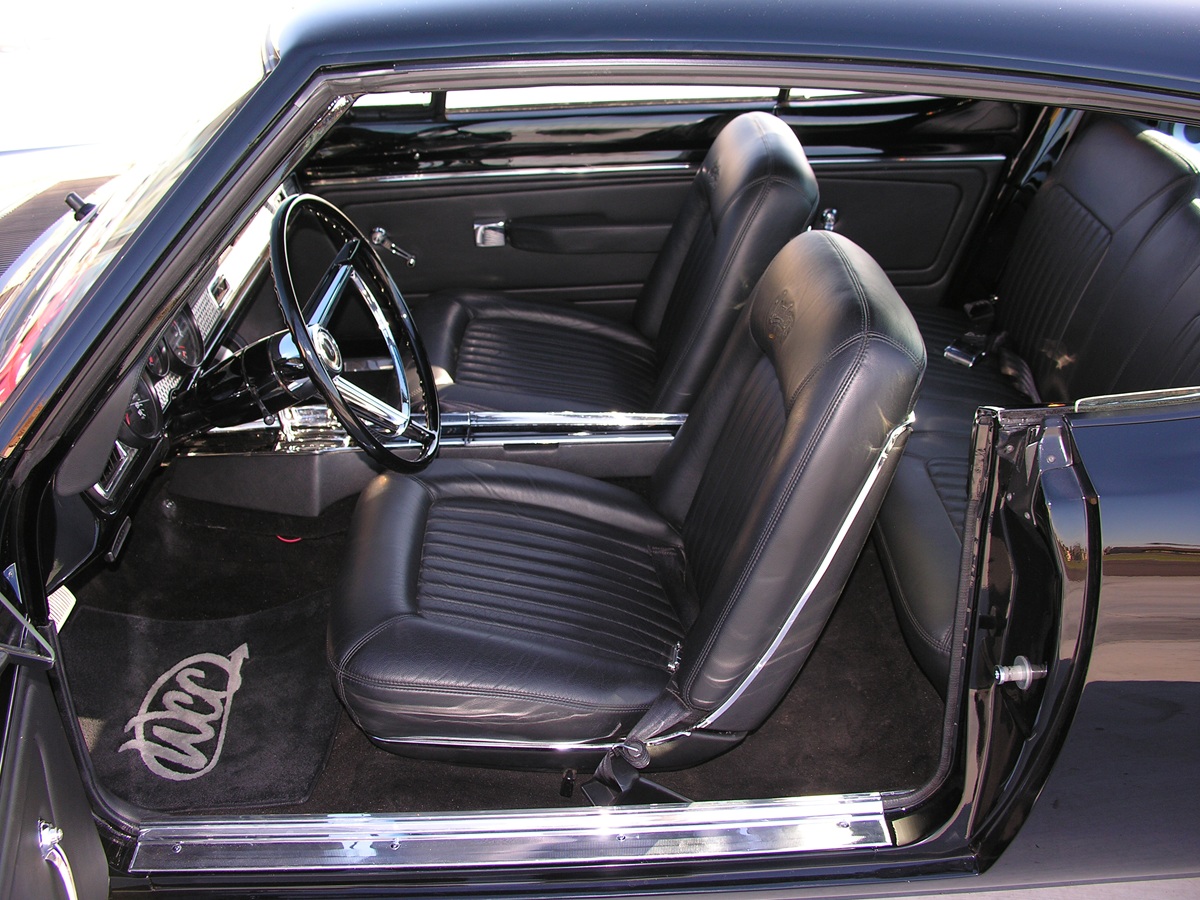
“Old school” best describes the appearance of the interior, which features the factory center console, roll-up windows, black leather seating and stock steering wheel. Upon closer inspection, the revised door panels (with revised arm rests) and the fitting of machined-turned panels on the face of the dash shows some subtle customizing as per WCC’s style.

Simple and clean was the theme for the dash, and the Vintage Air A/C system uses three vent openings. The radio was deleted and everything sound system-related is now installed in the rear-most part of the interior, controlled via iPod.

To keep in spirit with the “old school” theme of the car’s interior, the standard Barracuda seats were retained, albeit with new leather upholstery.
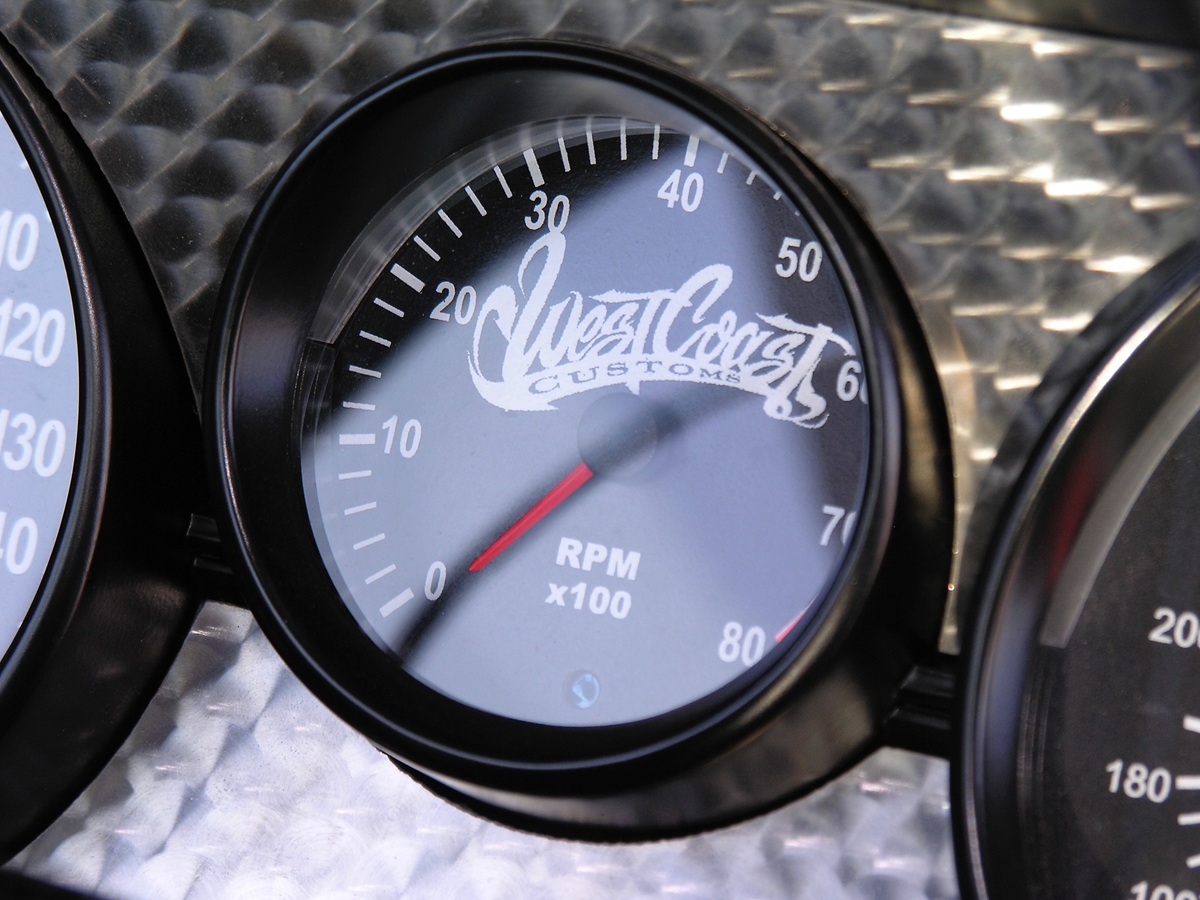
Marc Holmes of Custom Rod Gauges (Fresno, CA) did an excellent job in providing full instrumentation, including 160 mph speedometer, tach, fuel level, oil pressure, water temperature and voltmeter.

The custom WCC sound system features 6.5 WCC Orion component speakers front and rear, 1600 watt WCC Orion mono block amp for the subs, 800 watt PPI 4 channel amp for the highs, two 10″ 1600 watt WCC Orion sub-woofers, a Visualogic V-mod computer system, Kinetic 1400 battery, Sony 6.5 monitor, and custom fiberglass kick panels and rear sub box.
FISH TAIL

Subtle styling cues on the rear include the removal of the backup lights, replaced by chromed exhaust tips, red paint added to the rear-face of the deck lid to coordinate with the taillights and blacking-out of the chrome trip. Both the front and rear bumpers had their exposed bolt heads eliminated, adding to the clean appearance.
BIG ROLLERS

The car rides on large diameter Asanti wheels (19-inch front, 20-inch rear) and the centerpieces were color matched to the car.
SLEEK LINES
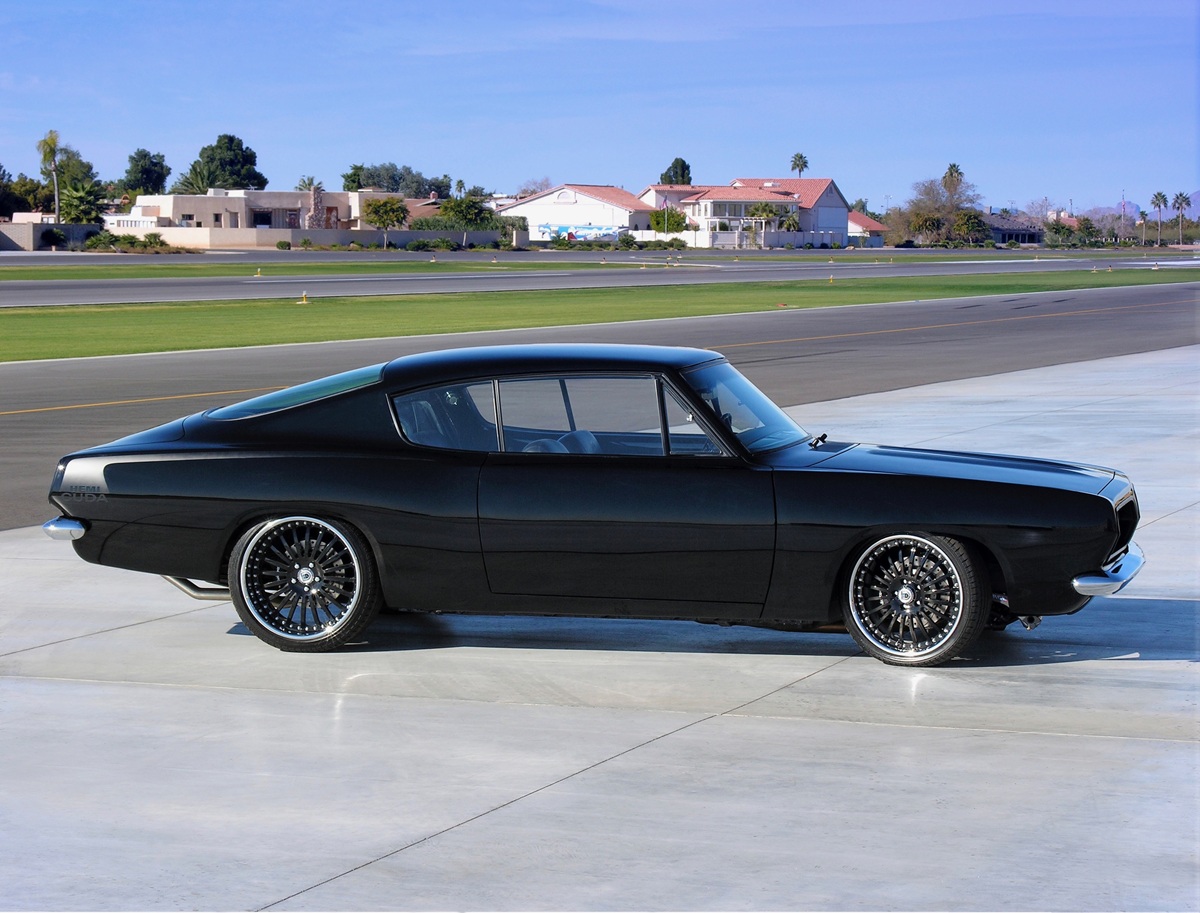
The Barracuda’s body was in surprisingly good shape and after it was brought down to bare metal, a minimum of metal work was required to ensure straightness. The painting process included 4 coats of black base coat, with 8 coats of clear coat, then baked at 150 degrees for 45 minutes. The color-matched wheels and blacked-out trim on the car gives it a sleek appearance, and the slightly raked stance (about 1.5 inches lower in the front) was how the builders of the car felt Boyd Coddington would have wanted it.

Clean lines, simple presentation. The body style of the second-gen Barracuda fastback is stunning dressed in black and with a lowered stance. That was the original goal of Duane Mayer and the end result was true to the game plan.
HOCKEY STICK

An adaptation of the 1970 “Hockey Stick” side stripes found on ’Cuda models was given to this second-generation Barracuda, applied in Flat Black so to not cause too much attention.

This is the stock emblem and it was painted Flat Black and fitted in the same position as stock.
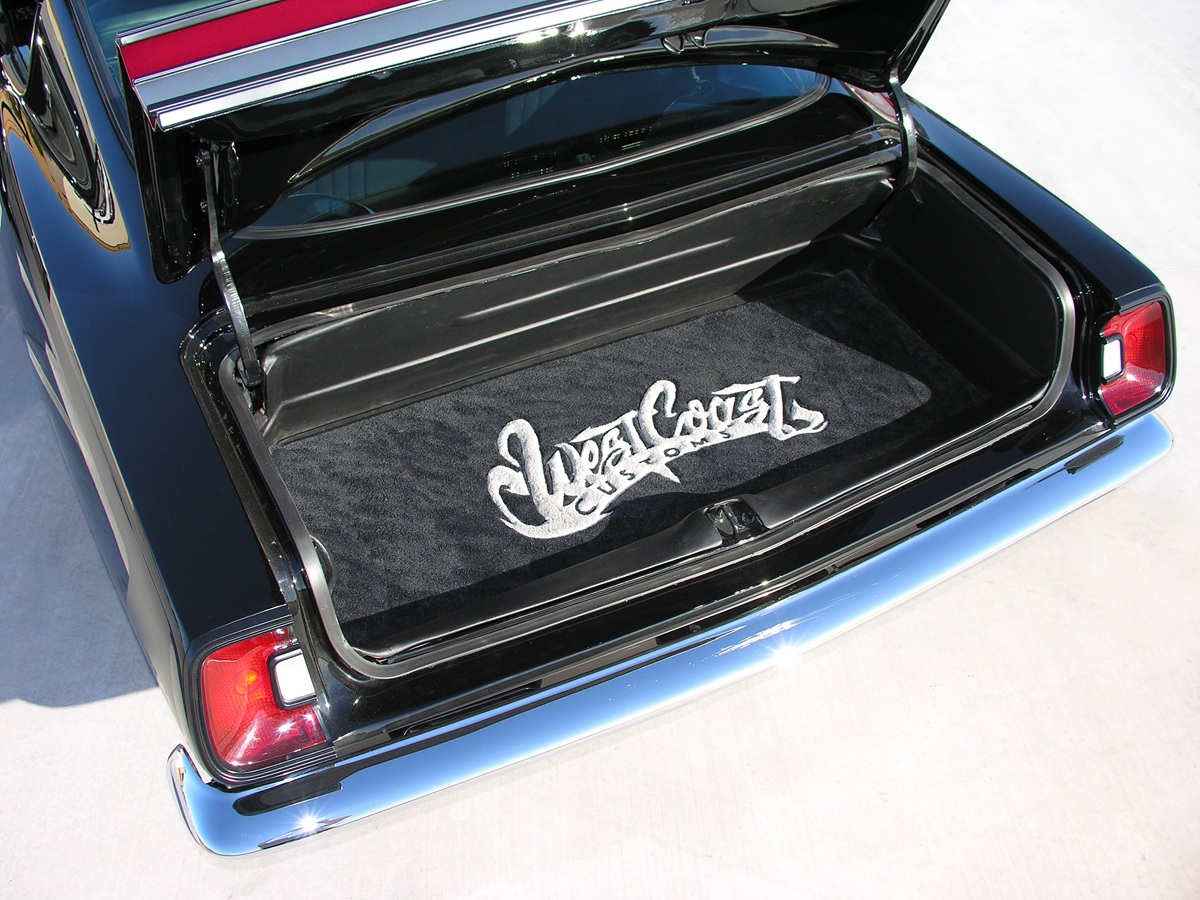
“West Coast Customs” logo was added to the carpeting in the trunk and the panel that separates the interior is now permanently closed because of the ICE (in-car entertainment) system.
DETAILS, DETAILS

Gibson Performance Exhaust designed a complete dual exhaust system for the vintage Mopar vehicle and used 2 ½ pipes and their chambered/louvered Superflow performance mufflers.


Bilstein gas shocks, rack and pinion steering, big Wilwood brakes – all part of the rapid 27-day build!
History has shown that some customized cars end up looking rather “dated” in a few years, while some live on forever as being stylish machines that pass the test of time. Given the smooth and simple modifications given to this vintage Barracuda, we’d have to predict this one will look clean and contemporary for a long, long time thanks to the care given to it and the style in which it was built in tribute to the late, great Boyd Coddington!
HARRISON FORD

American Graffiti movie buffs should recognize this guy, Harrison Ford! When the car was sold at the Barrett-Jackson Scottsdale, AZ, collector car auction, the new buyer was rewarded with a special lunch with actor and pilot Harrison Ford who was also the chairman of the EAA (Experimental Aircraft Association) Young Eagles organization.
ALL-NEW BARRACUDA STYLING IN 1967


There was most definitely numerous positive responses published in the popular car magazines of the day in regards to the styling of the all-new for 1967 model year Barracuda line. “Without a doubt the ’67 Barracuda sets new standards for Detroit styling. Its elegant, well-balanced and clean body design coupled with a lively performance make it a highly desirable piece of machinery,” stated Auto Topics Magazine. “You must admit that its styling is probably the best composite of lines and curves ever issued from Chrysler,” is how Hot Rod Magazine summarized the ’67 Barracuda’s styling. “Most of our staff members think the Barracuda S is a better looking car than the Mustang and it is equal in most aspects of driving,” stated Road & Track Magazine. “The Barracuda 383 is one of the best examples of the new breed of sporty cars from Detroit. It combines two of the Chrysler Corporation’s best components – the 383 engine and the TorqueFlite® – with good handling and braking characteristics, wrapped up in Plymouth’s best-looking sheet metal,” Car & Driver Magazine shared with its readers.
1967 BARRACUDA ADVERTISING/MARKETING




Plymouth advertising promoted the fastback body style for 1967 as the “New Sports Barracuda” and points out a hardtop and convertible were also available. There was an effort for the high-performance crowd to hype-up the optional Formula S package, and with that, the availability of the large 383-cid 4-bbl engine. Another advertising angle was the idea of campaigning a new Barracuda as a SCCA Rally car.
Dealership brochure images for the 1967 Barracuda fastback version show the joy of younger buyer types surrounding the cars, it was Plymouth’s direct competitor to the Mustang fastbacks of the era.
Author: James Maxwell
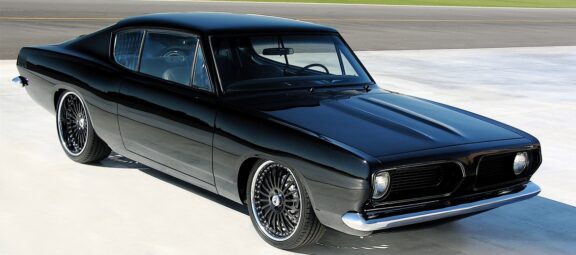
0 Comments